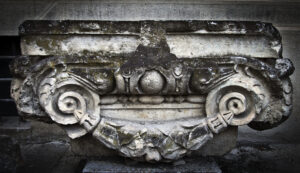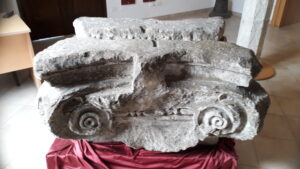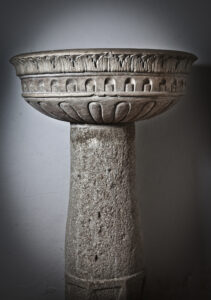SAN BARTOLOMEO’S CHURCH
It developed around the San Bartolomeo’s church the city pre-1915, of which the square bearing the name of the collegiate was an ideal center. The church it was rebuilt several times over the centuries due to damage caused by at least two seismic events which occurred in 1349 and 1703.
The first foundation dates back to around the middle of the IX century, as evidenced by the discovery in the rubble of 1915 of a decorated pillar. All in all, the structuring of the newer church benefited of elaborations up to the 1830s, concluded with the completion of the facade. The building it consisted of three naves with round arches and had eleven altars. The available images of the prospectus show a tripartition with subdivision by means of pairs of pilasters, corresponding to the internal tripartition.
To the right of the facade was located the square section bell tower, built in last years of the eighteenth century.
After the earthquake few remains of the destroyed church: the capitals of the walls of the facade, the bells, a medieval decoration, mentioned by Gavini as concerning to early Middle Ages construction. The ruins of San Bartolomeo’s facade were not consolidated, presumably also by virtue of the scarcity interest in the stylistic typology, which conditioned the choices of the Superintendence of Monuments of Lazio and Abruzzi. Subsequent interventions only led the complete shaving of the ruin.
Among the remains, two of the stone capitals originally placed at the top of the pilasters of the facade.
It would seem instead that some frames no longer available have in the past carried out the not very proper function of curbs in the sidewalks of the station square.
On the place where the church stood, only the base of the church remained bell tower, today next to a concrete elevation, which copies the last two pilasters on the right of the ancient one facade, showing the top decoration.
Archaeological excavations of 2004 brought to light remains – today clearly visible inner the fenced area –
of the foundations of the second and third pillars of the north aisle and those of the four pillars of the nave south of the destroyed church.


